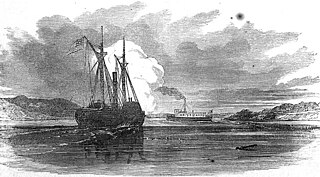
A tugboat or tug is a marine vessel that manoeuvres other vessels by pushing or pulling them, with direct contact or a tow line. These boats typically tug ships in circumstances where they cannot or should not move under their own power, such as in crowded harbors or narrow canals, or cannot move at all, such as barges, disabled ships, log rafts, or oil platforms. Some are ocean-going, and some are icebreakers or salvage tugs. Early models were powered by steam engines, which were later superseded by diesel engines. Many have deluge gun water jets, which help in firefighting, especially in harbours.
Six ships of the United States Navy have borne the name USS Powhatan or USNS Powhatan, named in honor of Powhatan (1550–1618), an Indian chief in tidewater Virginia; the father of Pocahontas.
Three ships in the United States Navy have been named USS Saco for the Saco River and for the Saco, Maine.

A salvage tug, known also historically as a wrecking tug, is a specialized type of tugboat that is used to rescue ships that are in distress or in danger of sinking, or to salvage ships that have already sunk or run aground.
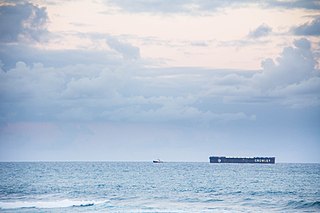
Crowley, legally Crowley Maritime Corporation, is based in Jacksonville, Florida, United States. Founded in 1892, Crowley is primarily a family- and employee-owned vessel management, owner, and supply chain logistics services company, providing services globally. As of July 2016, Crowley was ranked as the 13th largest private company in Florida, employing approximately 5,300 people worldwide with revenues of $2.2 billion. It provides its services using a fleet of more than 300 vessels, consisting of RO-RO vessels, LO-LO vessels, tankers, Articulated Tug-Barges (ATBs), tugs and barges. Crowley's land-based facilities and equipment include terminals, warehouses, tank farms, and specialized vehicles.

Theodore Tugboat is a Canadian children's television series about a tugboat named Theodore who lives in the Big Harbour with all of his friends. The show originated in Halifax, Nova Scotia, Canada as a co-production between the CBC, and the now defunct Cochran Entertainment, and was filmed on a model set using radio controlled tugboats, ships, and machinery. Production of the show ended in 2001, and its distribution rights were later sold to Classic Media. The show premiered in Canada on CBC Television, then went to PBS, was on Qubo in the United States, and has appeared in eighty different countries.
Apalachicola (YTB-767) was a United States Navy Natick-class large harbor tug named for Apalachicola, Florida.
USS Arctic is the name of several ships of the U.S. Navy:
USS Mariner may refer to the following ships of the United States Navy:
USS Pilgrim has been the name of more than one United States Navy ship, and may refer to:

The Mary D. Hume was a steamer built at Gold Beach, Oregon in 1881, by R. D. Hume, a pioneer and early businessman in that area. Gold Beach was then called Ellensburg. The Hume had a long career, first hauling goods between Oregon and San Francisco, then as a whaler in Alaska, as a service vessel in the Alaskan cannery trade, then as a tugboat. She was retired in 1977 and returned to Gold Beach. In 1985 she sank in the Rogue River and has remained there ever since as a derelict vessel on the shoreline. The Hume is listed on the National Register of Historic Places.
The Arctic is Earth's north polar region.
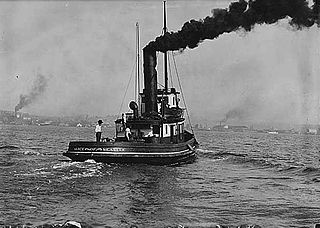
Alice was a Puget Sound steam passenger ship built in 1897. Alice was later rebuilt into a steam tug, and later converted to diesel power and renamed Simon Foss. As a tug, the vessel was in service until 1963. This vessel should not be confused with the similarly designed vessel Alice, built in 1892, which later became Foss 18.

Foss Maritime, is an American tugging company. The company was founded in 1889 by Thea Foss (1857–1927) and her husband Andrew Foss. The company is now the largest tug and towing concern on the west coast of the United States.

The Natick class is a class of harbor tugboats that have been active since the 1960s. Members of the class are named for Native American peoples and their members, USS Redwing excepted. As of 1 April 2015, five to eight Natick-class tugs remain in active service. Members of this class were designed under project SCB 147A.

The Ottawa was a tugboat that sank in Lake Superior off the coast of Red Cliff in Russell, Bayfield County, Wisconsin. The wreckage site was added to the National Register of Historic Places in 1992.
The IRS class of tugboats are a series of Bollard pull tugboats built by Hindustan Shipyard Limited, Visakhapatnam, for the Indian Navy.
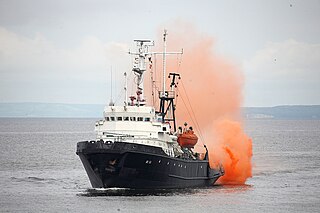
The Sorum class, Soviet designation Project 745, is a series of seagoing tugs built for the Soviet Navy and KGB Border Troops, and later operated by the Russian Navy and FSB Border Service.
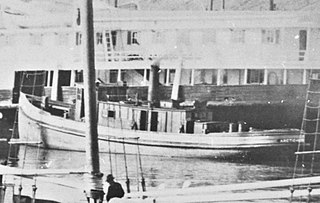
Arctic was a wooden-hulled tugboat that worked on the Great Lakes of North America from 1881 to 1930. In 1930 the Arctic was stripped of her machinery, and abandoned at Manitowoc, Wisconsin. On June 22, 2018, the remains of the Arctic were listed on the National Register of Historic Places.










